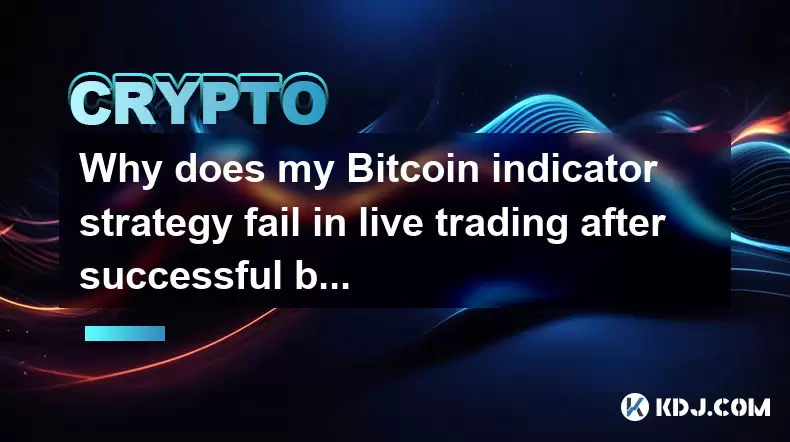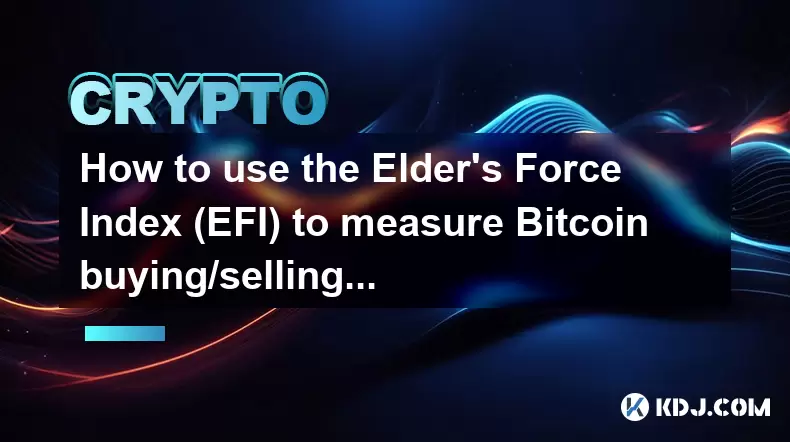-
 Bitcoin
Bitcoin $108,778.4882
0.68% -
 Ethereum
Ethereum $2,563.3783
2.01% -
 Tether USDt
Tether USDt $1.0001
-0.01% -
 XRP
XRP $2.2881
0.77% -
 BNB
BNB $662.2819
1.12% -
 Solana
Solana $152.2652
3.21% -
 USDC
USDC $0.9999
-0.01% -
 TRON
TRON $0.2873
0.90% -
 Dogecoin
Dogecoin $0.1715
4.20% -
 Cardano
Cardano $0.5868
1.50% -
 Hyperliquid
Hyperliquid $39.6796
1.73% -
 Sui
Sui $2.9136
0.85% -
 Bitcoin Cash
Bitcoin Cash $495.4980
1.77% -
 Chainlink
Chainlink $13.5765
3.06% -
 UNUS SED LEO
UNUS SED LEO $9.0753
0.53% -
 Stellar
Stellar $0.2503
3.73% -
 Avalanche
Avalanche $18.2012
1.86% -
 Shiba Inu
Shiba Inu $0.0...01174
1.83% -
 Toncoin
Toncoin $2.7998
-6.08% -
 Hedera
Hedera $0.1596
3.89% -
 Litecoin
Litecoin $87.3119
0.20% -
 Monero
Monero $319.5596
1.08% -
 Polkadot
Polkadot $3.3887
0.93% -
 Dai
Dai $0.9999
-0.01% -
 Ethena USDe
Ethena USDe $1.0001
-0.01% -
 Bitget Token
Bitget Token $4.3294
-1.36% -
 Uniswap
Uniswap $7.3898
1.60% -
 Aave
Aave $287.5336
5.76% -
 Pepe
Pepe $0.0...01005
3.24% -
 Pi
Pi $0.4588
1.90%
Why does my Bitcoin indicator strategy fail in live trading after successful backtesting?
Bitcoin strategies often fail live due to overfitting, liquidity issues, latency, and emotional biases absent in backtesting.
Jul 07, 2025 at 11:21 am

Understanding Backtesting vs. Live Trading Conditions
Many traders find that their Bitcoin indicator strategy performs exceptionally well during backtesting but fails when applied to live trading environments. The primary reason lies in the fundamental differences between historical data and real-time market conditions. In backtesting, you're using clean, non-latent, and complete datasets, which do not reflect the noise, slippage, and execution delays present in actual trading.
Moreover, backtests often assume ideal entry and exit points without considering bid-ask spreads or order book depth. These assumptions can lead to misleading performance metrics. When transitioning to live markets, these discrepancies become apparent, especially in volatile assets like Bitcoin, where price action is fast and unpredictable.
Overfitting Your Strategy to Historical Data
One of the most common pitfalls in developing a Bitcoin indicator strategy is overfitting your model to past data. Overfitting occurs when a strategy is so finely tuned to historical patterns that it becomes ineffective in new, unseen market conditions. This results in strategies that look profitable on paper but collapse under real-world stress.
To identify overfitting:
- Check if small changes in parameters drastically affect performance
- Test the strategy on out-of-sample data
- Use walk-forward optimization techniques
Avoiding overfitting involves simplifying indicators, reducing the number of parameters, and ensuring robustness across multiple timeframes and market cycles.
Liquidity Issues in Real-Time Execution
Even if your Bitcoin indicator strategy shows promising signals, liquidity constraints can prevent accurate execution in live markets. For instance, placing a large trade based on an indicator signal may result in partial fills or unfavorable prices due to insufficient order book depth.
This issue is more pronounced during periods of high volatility or low volume. Strategies that rely on quick entries and exits, such as scalping or momentum plays, are particularly vulnerable. You must account for liquidity by:
- Analyzing historical order book data
- Using limit orders instead of market orders
- Testing with simulated execution models
Failure to consider these aspects leads to unrealistic expectations about trade execution speed and cost.
Ignoring Market Microstructure and Latency
In live trading environments, latency and market microstructure play critical roles in determining whether a trade will be successful. High-frequency trading bots and institutional players react within milliseconds, often altering the price before retail traders can execute their trades based on lagging indicators.
Backtests typically ignore this latency and assume instantaneous execution at desired prices. However, in live scenarios:
- Delays in receiving data feeds can cause missed opportunities
- Order routing inefficiencies can impact fill rates
- Market impact from large orders can distort entry points
Traders should use direct market access (DMA) brokers, co-location services, or APIs with low-latency connections to mitigate these issues, especially when dealing with fast-moving assets like Bitcoin.
The Role of Psychological Factors and Behavioral Biases
While technical flaws contribute significantly to failed strategies, psychological factors and behavioral biases also play a role. During live trading, emotions such as fear, greed, and hesitation can interfere with disciplined execution of a predefined Bitcoin indicator strategy.
Common psychological pitfalls include:
- Deviation from the original plan due to panic selling or FOMO buying
- Cherry-picking trades that seem more "obvious" after the fact
- Disregarding stop-losses or position sizing rules
These behaviors are absent in backtesting, where decisions are pre-programmed and emotionless. Maintaining strict discipline through automated trading systems or rigorous manual adherence to rules helps minimize emotional interference.
Frequently Asked Questions
Q: Can I completely eliminate the gap between backtesting and live trading?
A: While you cannot fully eliminate the gap, you can reduce it by incorporating transaction costs, slippage simulations, and realistic execution models into your backtesting environment.
Q: How do I test my Bitcoin indicator strategy against different market conditions?
A: Use walk-forward analysis, test on multiple exchanges and timeframes, and include both trending and ranging market phases to ensure robustness.
Q: Are certain types of indicators more prone to failure in live trading?
A: Lagging indicators like moving averages are more susceptible to whipsaws and delayed signals, especially in fast-moving crypto markets. Combining them with leading indicators can improve responsiveness.
Q: Should I avoid manual trading altogether if I want consistency with my Bitcoin strategy?
A: Manual trading introduces human error and inconsistency, but some traders prefer it for flexibility. To maintain consistency, use semi-automated tools or set strict execution rules.
Disclaimer:info@kdj.com
The information provided is not trading advice. kdj.com does not assume any responsibility for any investments made based on the information provided in this article. Cryptocurrencies are highly volatile and it is highly recommended that you invest with caution after thorough research!
If you believe that the content used on this website infringes your copyright, please contact us immediately (info@kdj.com) and we will delete it promptly.
- Bitcoin Wallet Hack? Coinbase Exec Sounds the Alarm on $8B Whale Movement
- 2025-07-07 18:30:12
- Mercado Bitcoin, Tokenization, and XRP Ledger: A Latin American Power Play
- 2025-07-07 18:30:12
- Ripple's RLUSD: Revolutionizing Cross-Margin Trading for Institutions
- 2025-07-07 18:35:12
- Babylon, Bitcoin, and the EVM Mainnet: A New Era for BTCFi?
- 2025-07-07 16:30:11
- Queen Elizabeth Coin Sells for £31,000: A Royal Fortune in Your Pocket?
- 2025-07-07 16:30:11
- XRP Price Check: Will Resistance Trigger a July Drop?
- 2025-07-07 17:10:12
Related knowledge

How to identify a volatility contraction pattern on Bitcoin using indicators?
Jul 07,2025 at 07:28am
What is a Volatility Contraction Pattern in Bitcoin Trading?A volatility contraction pattern refers to a phase where the price movement of an asset, such as Bitcoin, becomes increasingly narrow over time. This typically signals that the market is consolidating and may be preparing for a breakout or breakdown. In simpler terms, when volatility contracts,...

What is the Woodies CCI indicator and can it be used for Bitcoin?
Jul 04,2025 at 05:14pm
Understanding the Woodies CCI IndicatorThe Woodies CCI indicator is a variation of the traditional Commodity Channel Index (CCI), which was originally developed by Donald Lambert. The standard CCI measures the current price level relative to an average price over a given period, typically 14. However, the Woodies version modifies this calculation to mak...

How to use indicators to trade the opening range breakout for Bitcoin CME futures?
Jul 05,2025 at 07:35pm
What Is the Opening Range Breakout Strategy?The opening range breakout (ORB) strategy is a popular trading technique used in both traditional markets and cryptocurrency futures, particularly for Bitcoin on the CME. This method involves identifying a specific price range formed during the early phase of a trading session and then taking positions when th...

How to use the Relative Vigor Index (RVI) for Bitcoin trading?
Jul 07,2025 at 02:00pm
Understanding the Relative Vigor Index (RVI)The Relative Vigor Index (RVI) is a technical analysis tool used to assess the strength of price movements in financial markets, including cryptocurrencies like Bitcoin. It operates under the assumption that prices tend to close higher in an uptrend and lower in a downtrend. The RVI compares the closing price ...

What does a bearish cross on the Stochastic RSI mean for Bitcoin?
Jul 05,2025 at 07:18pm
Understanding the Stochastic RSI IndicatorThe Stochastic RSI (Relative Strength Index) is a momentum oscillator used in technical analysis to identify overbought or oversold conditions in an asset's price. It combines two well-known indicators — the RSI and the Stochastic Oscillator — to provide more nuanced signals than either could alone. The Stochast...

How to use the Elder's Force Index (EFI) to measure Bitcoin buying/selling pressure?
Jul 07,2025 at 02:50am
What is the Elder's Force Index (EFI)?The Elder's Force Index (EFI) is a technical indicator developed by Dr. Alexander Elder to measure the power behind price movements in financial markets. It combines both price change and volume to assess buying or selling pressure over a specific period. In the context of Bitcoin trading, EFI helps traders understa...

How to identify a volatility contraction pattern on Bitcoin using indicators?
Jul 07,2025 at 07:28am
What is a Volatility Contraction Pattern in Bitcoin Trading?A volatility contraction pattern refers to a phase where the price movement of an asset, such as Bitcoin, becomes increasingly narrow over time. This typically signals that the market is consolidating and may be preparing for a breakout or breakdown. In simpler terms, when volatility contracts,...

What is the Woodies CCI indicator and can it be used for Bitcoin?
Jul 04,2025 at 05:14pm
Understanding the Woodies CCI IndicatorThe Woodies CCI indicator is a variation of the traditional Commodity Channel Index (CCI), which was originally developed by Donald Lambert. The standard CCI measures the current price level relative to an average price over a given period, typically 14. However, the Woodies version modifies this calculation to mak...

How to use indicators to trade the opening range breakout for Bitcoin CME futures?
Jul 05,2025 at 07:35pm
What Is the Opening Range Breakout Strategy?The opening range breakout (ORB) strategy is a popular trading technique used in both traditional markets and cryptocurrency futures, particularly for Bitcoin on the CME. This method involves identifying a specific price range formed during the early phase of a trading session and then taking positions when th...

How to use the Relative Vigor Index (RVI) for Bitcoin trading?
Jul 07,2025 at 02:00pm
Understanding the Relative Vigor Index (RVI)The Relative Vigor Index (RVI) is a technical analysis tool used to assess the strength of price movements in financial markets, including cryptocurrencies like Bitcoin. It operates under the assumption that prices tend to close higher in an uptrend and lower in a downtrend. The RVI compares the closing price ...

What does a bearish cross on the Stochastic RSI mean for Bitcoin?
Jul 05,2025 at 07:18pm
Understanding the Stochastic RSI IndicatorThe Stochastic RSI (Relative Strength Index) is a momentum oscillator used in technical analysis to identify overbought or oversold conditions in an asset's price. It combines two well-known indicators — the RSI and the Stochastic Oscillator — to provide more nuanced signals than either could alone. The Stochast...

How to use the Elder's Force Index (EFI) to measure Bitcoin buying/selling pressure?
Jul 07,2025 at 02:50am
What is the Elder's Force Index (EFI)?The Elder's Force Index (EFI) is a technical indicator developed by Dr. Alexander Elder to measure the power behind price movements in financial markets. It combines both price change and volume to assess buying or selling pressure over a specific period. In the context of Bitcoin trading, EFI helps traders understa...
See all articles

























































































